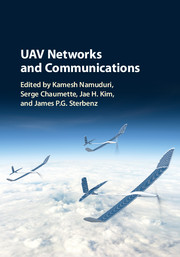We are accepting submissions for IAUV 2020, which is organized in conjunction with IEEE SECON 2020. The workshop will be held in Como, Italy, in June 2020. The submission deadline is March 31, 2020. For details, please visit https://iauv2020.loria.fr/.
Paper accepted in IEEE Transactions on Mobile Computing
Our paper entitled “Take the Field from your Smartphone: Leveraging UAVs for Event Filming” is accepted for publication in IEEE TMC.
This paper formulates an event coverage problem, namely, Sport Event Filming, with Connectivity Constraints, in which a team of Unmanned Aerial Vehicles (UAV) fly over a limited field in order to track the movements of an object (e.g., of the ball) and to deliver a video stream of the events (e.g., ball passes, goals) to the spectators meeting certain timeliness and video quality criteria. In addition to a mathematical model that determines the sequence of optimum movements for the UAVs, we also provide dynamic, artificial potential function based, distributed UAV movement schemes to optimize networking performance.
Paper accepted in Autonomous Robots
Our paper entitled “Live multicast video streaming from drones: an experimental study” is accepted for publication in Autonomous Robots.
In this paper, we present and evaluate a multicast framework for point-to-multipoint and multipoint-to-point-to-multipoint video streaming. We evaluate the proposed application-layer rate-adaptive multicast video streaming over an aerial ad-hoc network that uses IEEE 802.11 in terms of goodput, delay, and packet loss.
Panel in IEEE WCNC 2019 on Drone Networks
Mr. Emini (T-Mobile Austria), Dr. Jeroen Wigard (Nokia Bell Labs), Dr. Challita (Ericsson) and myelf were panelists in IEEE WCNC 2019. The panel entitled ” Drone Networking: Technical Challenges and Business Opportunities” was organized by Dr. Fakhreddine and Dr. Bettstetter. We had a fruitful discussion on many topics including technical challenges inherent to the use of cellular-connected UAVs, regulatory aspects and security challenges in UAV networking, 5G and UAV networking, and the expected status of UAV networking for the next 5/10 years. 
Workshop on Unmanned Vehicles in IEEE SECON
We are organizing the 1st International Workshop on Internet of Autonomous Unmanned Vehicles (IAUV 2019) in conjunction with IEEE SECON 2019 – IEEE International Conference on Sensing, Communication and Networking.
The workshop will be held in Boston, MA, USA, on June 10th, 2019. The submission deadline is March 15, 2019. For details, please visit https://iauv2019.loria.fr/.
Selected authors will be invited to submit an extended version of their works to the MDPI Special Issue on « UAV-Based Applications in the Internet of Things (IoT) ». The special issue submission deadline is on July 15th, 2019.
Paper accepted in ITSC
Our paper entitled “Guarded by Gamora: How Access Control Balances Out Waiting Times in Transport Systems” is accepted for publication in International Conference on Intelligent Transportation Systems (ITSC).
The paper considers a transport system with passengers traveling between stations in periodically arriving cabins. We propose and evaluate an access control algorithm that dynamically limits the number of passengers who are allowed to board the incoming cabin based on the passenger arrival and departure rates in subsequent stations.
Chapter in “UAV Networks and Communications”
UAV Networks and Communications, Cambridge University Press, edited by Kamesh Namuduri, University of North Texas, Serge Chaumette,  Université de Bordeaux, Jae H. Kim, Boeing Research and Technology, and James P.G. Sterbenz, University of Kansas is available for Pre-order.
Université de Bordeaux, Jae H. Kim, Boeing Research and Technology, and James P.G. Sterbenz, University of Kansas is available for Pre-order.
This is the first book to focus on communications and networking aspects of UAVs. It covers the foundational concepts of the topic, as well as offering a detailed insight into the state of the art in UAVs and UAV networks, discussing the regulations, policies, and procedures for deployment (including analysis of risks and rewards), along with demonstrations, test-beds, and practical real-world applications in areas such as wildlife detection and emergency communications.
Samira Hayat and I have co-authored the chapter entitled “Aerial Wi-Fi Networks“, which identifies the characteristics of aerial links and communication requirements for an aerial network. A special focus is given to IEEE 802.11 (Wi-Fi) technologies due to their wide availability in current networking devices, their suitability for small UAVs, and the extensive research dedicated to them in the past decades. We report real-world measurements for multi-hop aerial Wi-Fi networks and discuss the feasibility of this communication technology to deliver the required quality of service for several potential applications.
Paper accepted in Elsevier Ad Hoc Networks Journal
Our paper entitled “Drone Networks: Communications, Coordination, and Sensing” is accepted for publication in Ad Hoc Networks Journal.
In this paper, we describe a high-level architecture for the design of a collaborative aerial system consisting of drones with on-board sensors and embedded processing, sensing, coordination, and communication and networking capabilities. We implement a multi-drone system consisting of quadcopters and demonstrate its potential in disaster assistance and area monitoring scenarios. Furthermore, we illustrate design challenges and present potential solutions based on the lessons learned so far.
Supporting First Response Personnel with Autonomous Drones
Our research at Klagenfurt focuses on many civil applications of drones. The following video illustrates the functionalities we can enable on quadrotor platforms tailored for disaster response. Specifically, we show multi-drone coordination supporting aerial surveillance, target detection, video streaming, delivery, navigation under forest canopy and human-drone interaction.
Dronehub K
Dronehub K is our new portal for UAV/drone related activities at University of Klagenfurt and Lakeside Labs GmbH.
You can find information on our current and previous projects and our publications, in addition to posts from guest researchers.